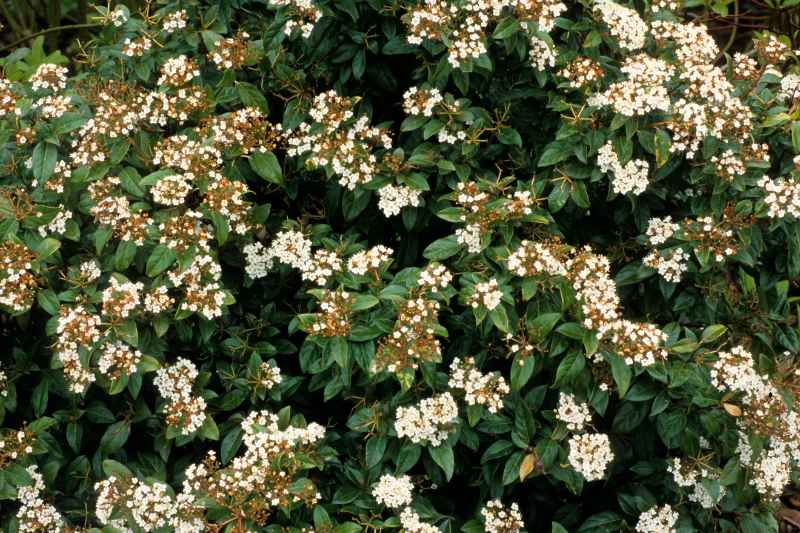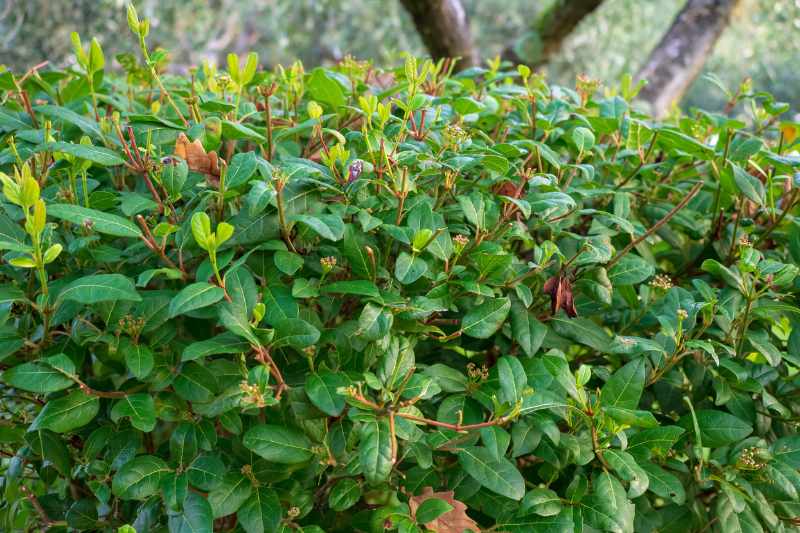Laurustinus, scientifically named Viburnum tinus, is an evergreen bush widely appreciated for its hardiness and winter flowering. Native to Mediterranean region, it produces fragrant white flowers from late winter, followed by attractive black berries. Its cold tolerance and adaptability to different soil types make it an ideal choice for hedges in a variety of garden settings.

Growing Laurustinus in the garden
Laurustinus (Viburnum tinus) thrives in full sun or partial shade, in well-drained soil. It tolerates drought once established, but regular watering promotes optimal growth. This bush requires little pruning, except to maintain desired shape or control size. It is resistant to most diseases and pests, making it a relatively low-maintenance choice for gardeners.
There are different varieties of Viburnum tinus: purple-leaved forms such as Viburnum tinus 'Purpureum', variegated foliage forms such as Viburnum tinus 'Variegatum', large-flowered types like Viburnum tinus 'Giganteum' or more compact forms such as Viburnum tinus 'Gwenllian'.
When to plant a Laurustinus hedge?
Planting Laurustinus for a hedge is best done in autumn or early spring. This allows the plant to establish roots in mild conditions. Choose a site that receives full sun or partial shade, avoiding overly shaded areas. Ensure soil is well drained, as Laurustinus does not like waterlogging.

How to create a Viburnum tinus hedge?
- Site preparation : Clear area, removing weeds and debris. Dig a trench the desired length for the hedge, about 50 cm deep and wide.
- Spacing of young plants : For a dense hedge, plant Laurustinus 60–90 cm apart.
- Planting : Place each plant in planting hole and backfill with mixture of soil and compost. Water well after planting.
- Maintenance : Water regularly during first year. Prune as needed to maintain shape and encourage dense growth.
Required equipment
- Spade or spade
- Digging fork, rake, hoe for site preparation
- Watering can or hose
- Pruning shears and hedge trimmer for maintenance
































Comments